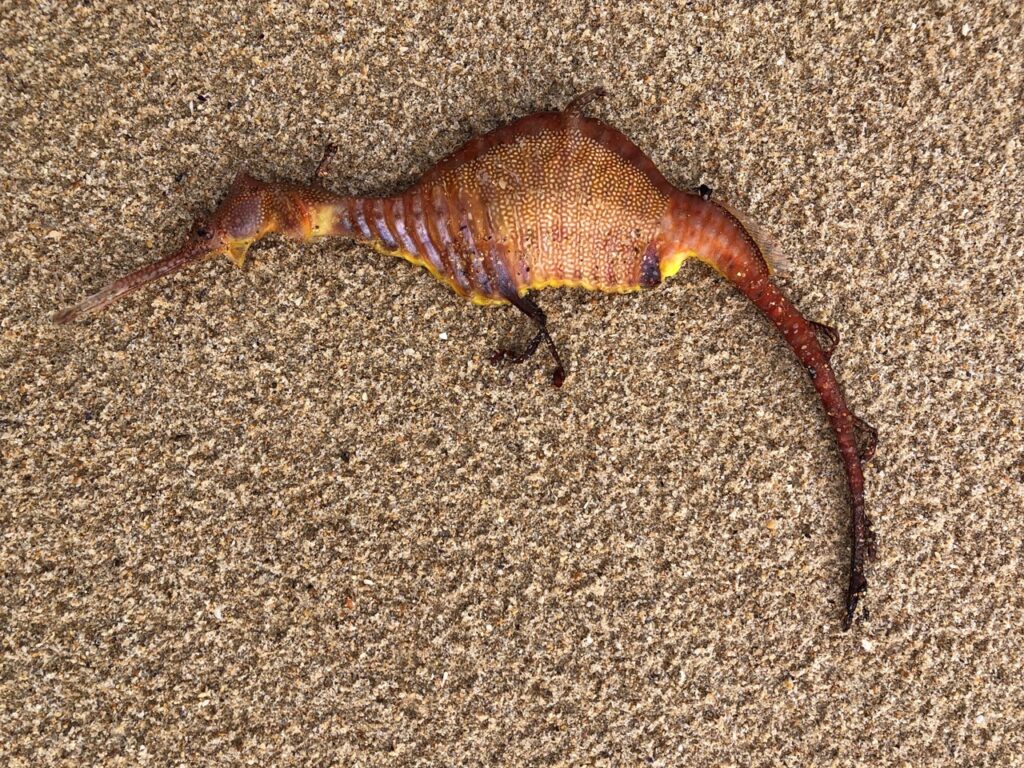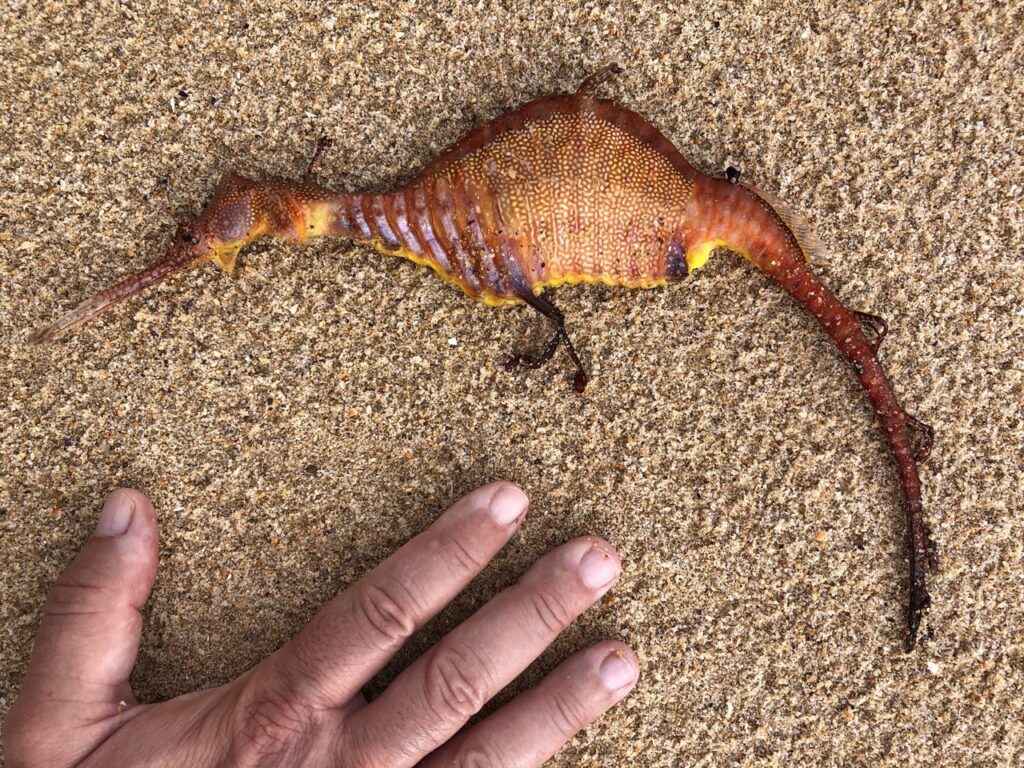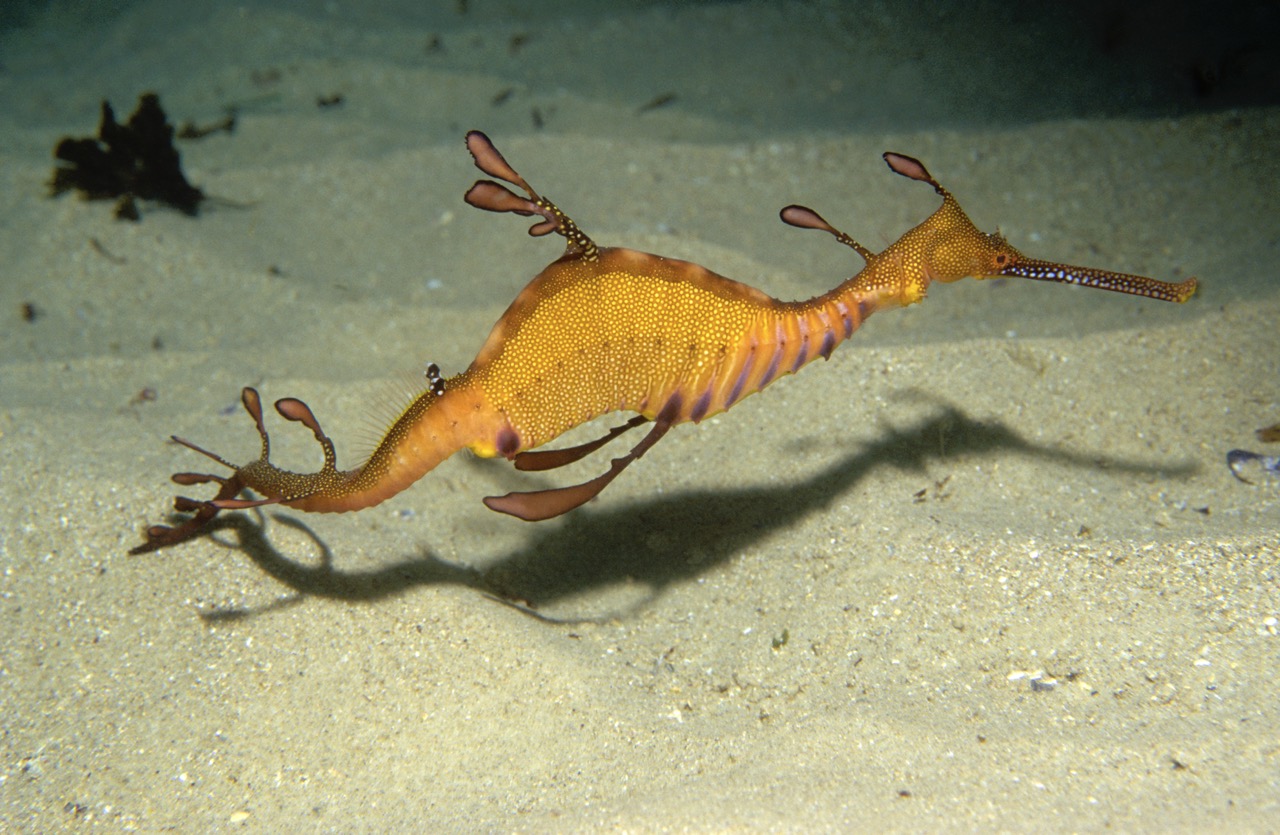Weedy seadragons are found in waters all along Australia’s south coast. Photo: Professor Erik Schlogl.
A Sydney marine scientist is calling for beachgoers who find weedy seadragons washed up on the south coast to photograph them and send details to researchers at the University of Technology Sydney (UTS).
Weedy sea dragons can be found in coastal waters from Geraldton in WA to Port Stephens in NSW, which means the seadragons we encounter at Esperance are the same species as those seen around Sydney.
UTS professor David Booth is researching the causes of stranded sea dragons and sea horses around the world.
He said he had been leading research into the cause of seadragon deaths since April 2022, when more than 200 dead seadragons were found on beaches between the NSW Central Coast and Wollongong.

“Our investigation revealed the unprecedented deaths of seadragons were likely caused by a series of intense east coast low storms along with a marine heatwave,” he said.
“The little paper we wrote pertains to the east coast, but we found a report from SA about sea dragons stranded down there due to some sea foam wash up.
“So who knows what is happening in your area at the moment?”
Prof Booth said information from the public could help determine the scale of the problem and specific causes.
There are three varieties of seadragon found in southern Australia – Weedy, Leafy and Ruby seadragons. They live in kelp forests or seagrass beds on or near shallow, rocky reefs, which also support many other marine species.
Small shrimp-like crustaceans called mysids are a major food source for seadragons. Mysids disappeared from Sydney coastal waters for many months in early 2022, and so a lack of food also likely contributed to seadragon deaths.
“As climate change drives more intense marine heatwaves and storms, along with stronger winds and heavier rainfall, this could pose a serious threat to the survival of seadragon populations,” said Professor Booth.
If someone finds a washed-up seadragon, UTS researcher and coauthor Giglia Beretta advises photographing the animal (including an item for scale in the image), recording where and when it was found, and emailing the details to assist with research.

The address is David.Booth@uts.edu.au .
Images can also be uploaded to iNaturalist Australasian Fishes. The collection of weedy seadragon carcasses is only allowed under strict permits – touching the protected species could result in a fine.
Dead animals can be collected with the permission of Professor Booth under his UTS Fish Ecology Lab DPI permit.
Prof. Booth said the animals could also provide important information for ongoing population studies.
While Prof. Booth is collecting images of dead seadragons, divers who photograph living sea dragons are encouraged to upload them to the WA Museum website Seadragon Search.
The address is seadragonsearch.org/ .




